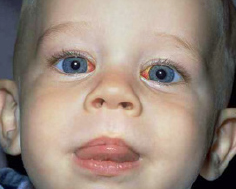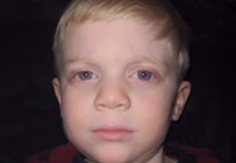Eye muscle surgery, or “strabismus surgery”, involves either increasing or decreasing the tension of the small muscles on the surface of the eye. These extraocular muscles move the eye in all directions.
The physicians at Pediatric Ophthalmic Consultants are all accomplished strabismus surgeons. We have a very large strabismus surgical service. We regularly operate upon patients from the New York Metro Region, other areas of the U.S. and abroad.
STRABISMUS SURGERY
This type of surgery is typically performed in a hospital outpatient surgical facility. During the surgery the eye is never removed! Rather, a small incision is made on the clear membrane covering the white part of one or both eyes. Through this incision, the appropriate surgery is then performed on the surface of the eye to eliminate the strabismus. The inside of the eyeball is not entered during this type of surgery. Contemporary strabismus surgical techniques involve “hidden” incisions, leaving virtually no visible scarring of the eye surface as a result of this surgery.
When strabismus surgery is recommended for a child, the earlier in life it is done the better the chance of the child achieving binocular vision, or “depth perception”.
Despite having the appropriate surgery, some patients may require further eye muscle surgery in the months, years or decades following their initial operation to further refine their ocular alignment.
ADJUSTABLE SUTURE SURGERY FOR ADULTS
As with children, adults who undergo eye muscle surgery can usually achieve precise surgical results with standard surgery. There are occasions, however, when such precision is not possible due to the underlying cause of the strabismus, such as scarring from old surgery, inflammation from eye muscle diseases, or neurological weakness. In these cases, it is sometimes advisable to adjust the tension of the muscles postoperatively.
In adjustable suture surgery, the surgery is performed under general anesthesia in the typical fashion except that temporary suture knots are placed. Several hours after awakening from anesthesia, the eye alignment is evaluated. If it is good, permanent knots are tied. If the eyes are not adequately aligned, an adjustment in the muscle tension can be performed. These final steps are completed with the patient awake and the surface of the eye anesthetized with eye drops. When appropriate, this technique can enhance the surgical outcome.

INFANTILE NYSTAGMUS SYNDROME
Infantile nystagmus syndrome (INS) refers to nystagmus that appears during the first six months of life. Although nystagmus may arise from an abnormality of the eyes, it can also arise as a result of a subtle imbalance of the eye movement mechanism within the brain.
Ocular albinism, optic nerve abnormalities, congenital cataracts and retinal dystrophies are the common ocular anomalies that may cause nystagmus.
Children with INS require a prompt pediatric ophthalmologic evaluation to rule-out characteristics that may suggest a serious neurologic cause of the nystagmus.
Most patients with nystagmus will have an identifiable null zone. That is, there will be a position of gaze where the nystagmus is least and therefore vision is best. This may cause a habitual abnormal head posture. For an example, if the nystagmus null zone is present when the child gazes upward, then a chin-down head posture will be present to place the eyes in up gaze. Alternatively, if the nystagmus null zone is present when the child gazes toward the right, then a left face-turn head posture will be present to place the eyes in right gaze.
Eye muscle surgery is very effective for two reasons in pediatric and adult patients with INS. For those patients with abnormal head postures due to an “eccentric” nystagmus null zone as described above, surgery can center the null zone thus eliminating the habitual abnormal head posture. Additionally, even in INS patients without abnormal head postures, simple “horizontal rectus tenotomy” surgery can significantly reduce the severity of nystagmus and establish a broader null zone.
The surgeons at Pediatric Ophthalmic Consultants regularly perform successful nystagmus surgery.


Pediatric Ophthalmic Consultants
40 West 72nd Street, New York, 10023 | 212-981-9800
The content of this Web site is for informational purposes only. If you suspect that you or your child has any ocular problem,
please consult your pediatrician, family practitioner, or ophthalmologist to decide if a referral to a pediatric ophthalmologist is required.







